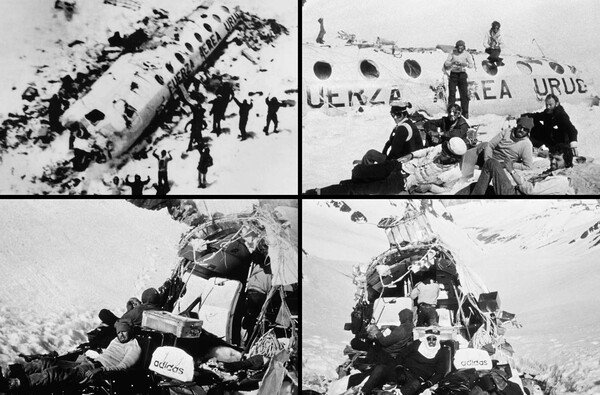
Human survival serve as powerful reminders of the strength of the human spirit, the importance of resourcefulness, and the will to overcome seemingly insurmountable challenges. They continue to inspire people around the world and highlight the indomitable nature of the human will to survive.
- Shackleton’s Endurance Expedition
- The Miracle of the Andes
- Aron Ralston’s Canyon Ordeal
- The Chilean Miners’ Rescue
- The Survival of Juliane Koepcke
You might like: 5 early human species existed on the Earth
1. Shackleton’s Endurance Expedition
Sir Ernest Shackleton’s Imperial Trans-Antarctic Expedition of 1914-1917 is one of the most legendary survival stories in history. The expedition aimed to be the first to cross the entire continent of Antarctica, but it faced disaster when its ship, the Endurance, became trapped in pack ice. Shackleton and his crew were stranded on the ice for months, enduring freezing temperatures, gale-force winds, and the constant threat of starvation.

Shackleton’s leadership and determination were instrumental in ensuring the survival of all 28 crew members. They eventually abandoned the sinking ship and embarked on a daring open-boat journey to the inhospitable Elephant Island. Shackleton and a small team then made a perilous voyage to South Georgia Island, where they secured rescue for the rest of the crew.
The Endurance expedition is a testament to human resilience, leadership, and teamwork in the face of extreme adversity. It’s a story of survival against all odds.
2. The Miracle of the Andes
On October 13, 1972, a Uruguayan rugby team’s plane crashed in the Andes Mountains, leaving them stranded at an altitude of over 12,000 feet in harsh conditions. The survivors had to endure freezing temperatures, avalanches, and limited food supplies. After more than two months, they faced an unthinkable decision: to survive, they had to resort to cannibalism.

Finally, on December 20, 1972, two of the group set out on foot to find help, and they encountered a Chilean shepherd who called for rescue. The survivors were airlifted to safety on December 20, 1972, more than two months after the crash. The story of their survival, resilience, and the moral dilemmas they faced is an extraordinary example of the human will to survive against all odds.
3. Aron Ralston’s Canyon Ordeal
Aron Ralston’s incredible story of survival occurred in April 2003 in Utah’s Blue John Canyon. While canyoneering alone, a boulder fell on Ralston, pinning his right arm against the canyon wall. He was trapped in the desolate wilderness with limited supplies and no way to free himself.

Ralston’s ordeal lasted 127 hours, during which he documented his thoughts on a camcorder. With dwindling water and food, he realized that his only chance of survival was to amputate his own arm. With a dull pocket knife, he severed his forearm and managed to rappel to safety and find help.
Ralston’s story of sheer determination and the will to live captivated the world, and it was later adapted into the movie “127 Hours,” with James Franco playing Ralston.
4. The Chilean Miners’ Rescue
In August 2010, 33 miners were trapped 2,300 feet underground in the San José Mine in Chile for 69 days. The mine collapsed, leaving them isolated in sweltering heat and darkness. They had limited food and water and were unsure if they would ever be rescued.

Above ground, a massive rescue operation was launched. Engineers and drillers worked tirelessly to create a borehole that would reach the miners. Communication lines, food, and supplies were sent down, and the miners managed to stay organized and optimistic.
On October 13, 2010, the world watched as each miner was safely brought to the surface one by one. Their successful rescue was a testament to human ingenuity, teamwork, and the enduring human spirit.
5. The Survival of Juliane Koepcke:
On Christmas Eve 1971, Juliane Koepcke, a 17-year-old high school student, survived a plane crash in the Peruvian rainforest. The crash, caused by lightning, left Koepcke the sole survivor. She endured nine days alone in the dense jungle, with injuries from the crash and minimal supplies.

Koepcke relied on her father’s teachings (a renowned biologist) and her own resourcefulness to survive. She followed a river downstream, collected rainwater, and found a small shelter in an abandoned logging camp. After nine days, she encountered loggers who took her to safety.
Juliane Koepcke’s survival is a remarkable story of resilience, intelligence, and adaptability in a hostile and remote environment.
Other human survival are
- Alexander Selkirk’s Solitary Island Survival: The story of Alexander Selkirk, who survived alone on an uninhabited island in the South Pacific for more than four years in the early 18th century, is often cited as the inspiration for Daniel Defoe’s novel “Robinson Crusoe.”
- Yossi Ghinsberg’s Amazon Jungle Ordeal: Yossi Ghinsberg’s survival tale in the Amazon rainforest was recounted in his book “Jungle.” In 1981, he became lost in the jungle after a rafting accident, surviving for three weeks with limited resources.
- The Donner Party’s Sierra Nevada Tragedy: The Donner Party, a group of pioneers, became stranded in the Sierra Nevada Mountains during the winter of 1846-1847. Facing starvation and harsh conditions, some resorted to cannibalism to survive.
- Douglas Mawson’s Antarctic Expedition: Douglas Mawson’s 1912 Antarctic expedition turned into a fight for survival after his two companions perished. He endured extreme cold, starvation, and isolation while making his way back to their base camp.
- Mauro Prosperi’s Marathon Des Sables Survival: Mauro Prosperi’s remarkable survival occurred during the 1994 Marathon des Sables, a grueling six-day ultramarathon in the Sahara Desert. He became disoriented during a sandstorm, surviving on limited supplies and drinking his urine.



